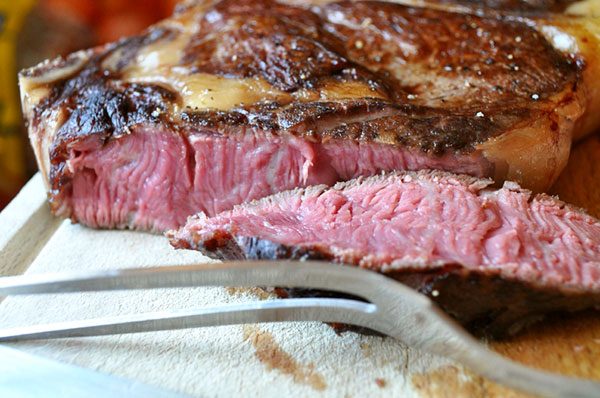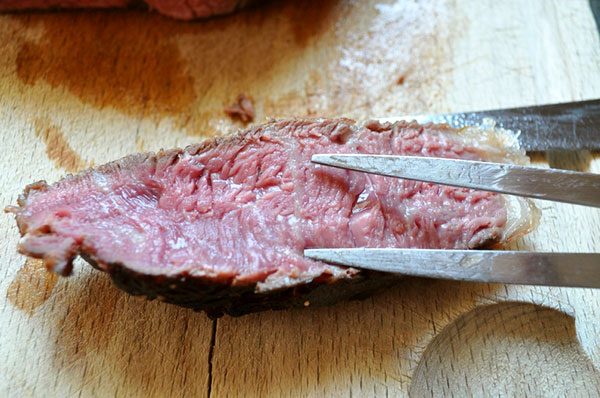How to cook a prime rib at low temperature
Ingredients list for 4 people
- A great prime rib
- Salt and pepper
Cooking instructions
1. Preheat the oven to 175 °F (80°C). Do not use convection, but conventional top and bottom heat. Put a dish to pre-heat in the oven; it will keep the meat warm.
2. In a greased pan, brown the meat for 2-3 minutes on each side. The meat should brown or caramelize slightly.
3. Put the meat in the hot dish from the oven and stick a thermometer probe into the cooking meat (the probe must reach the center of the piece, without touching the bone – it should be halfway up the thickness)
4. Add salt and pepper on both sides.
5. Put the dish quickly in the preheated oven so the meat does not cool.
6. Reduce oven temperature to 140°F (60°C) and cook for at least 2:30.
The meat should reach 130°F (55°C) for medium rare.
When the meat reaches that temperature, it may stay that way a while longer without drying or cooking. It will simply be hot. My last piece of beef stayed for 3:30 in the oven; the result was perfect!
7. Cut your prime rib into slices and serve immediately; meat cools quickly (possibly serve on heated plates).
Verdict
The meat is pink but cooked, tender, melting, and tasty as hell.
The small downside of this is the time spent cooking in the oven (even at low temperatures, the furnace runs for 2-3 hours).
Many ovens do not indicate their actual indoor temperature; it’s a “try and test” process to position the device at a temperature that will rise slowly inside the meat at 130°F (55°C) and not more nor less.
The temperature on the furnace must be between 130°F (55°C) and 150°F (65°C). Once the oven is controlled, the rest follows without any problem.



